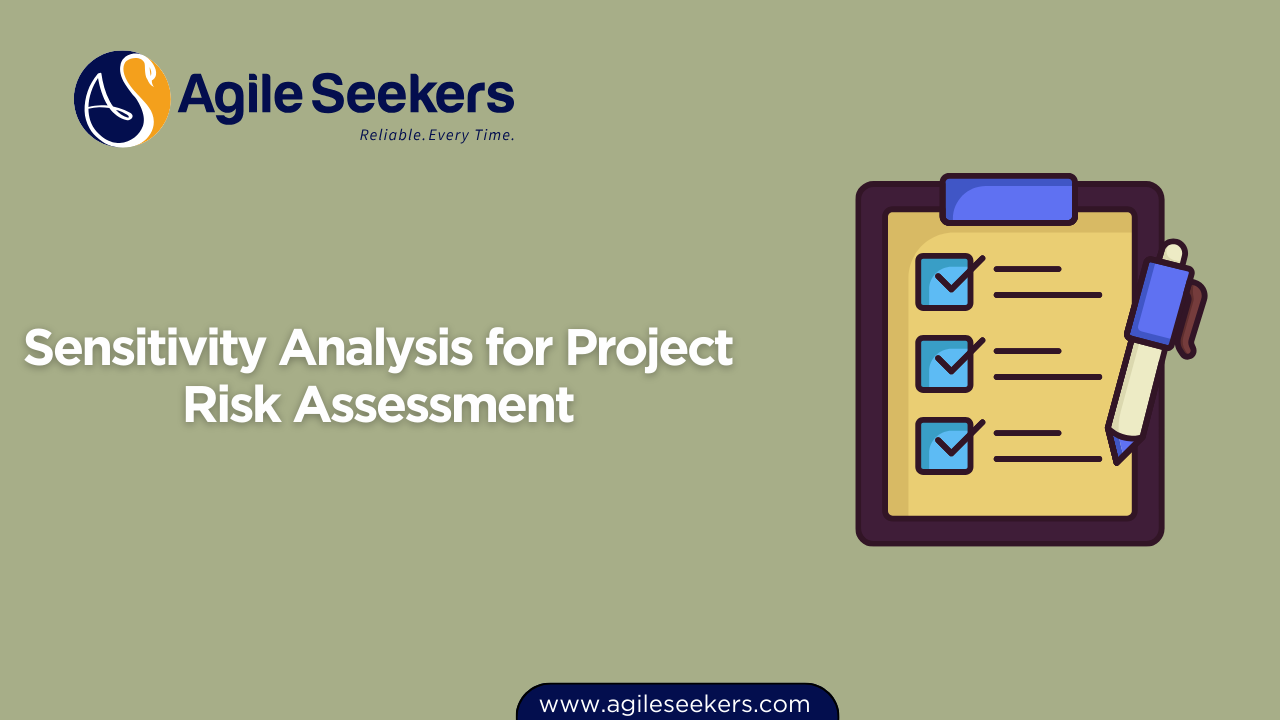Sensitivity Analysis for Project Risk Assessment

Every project carries uncertainties. Whether you’re working on a construction project, IT system rollout, or product launch, you face risks that can affect cost, schedule, or quality. Sensitivity analysis is a valuable tool in project risk assessment because it helps project managers understand which variables have the most significant impact on project outcomes. This article explains how sensitivity analysis works, its benefits, methods, and how it fits into overall project risk management strategies.
What is Sensitivity Analysis?
Sensitivity analysis examines how changes in input variables affect a project’s outcomes. It helps project teams identify which risks or assumptions have the biggest influence on key performance metrics such as project duration, budget, or deliverable quality. By systematically adjusting one input at a time and observing the change in output, project managers can see where to focus risk mitigation efforts.
Why Use Sensitivity Analysis in Project Management?
Projects often rely on estimates — cost, time, resource availability, or market demand — and all estimates come with uncertainty. Sensitivity analysis helps break down which uncertainties matter most. Instead of spreading attention equally across all risks, project teams can prioritize the high-impact areas. This focused approach supports better planning, resource allocation, and decision-making.
For example, in PMP certification training, you’ll learn that risk registers often contain dozens of potential risks. Without analysis, it’s hard to know which risks require the most attention. Sensitivity analysis makes that clear.
Key Benefits of Sensitivity Analysis
- Improves risk prioritization: Helps teams focus on variables with the greatest project impact.
- Enhances decision-making: Provides clear data on how sensitive outcomes are to individual assumptions.
- Supports contingency planning: Identifies areas where buffer time, additional resources, or alternative strategies may be necessary.
- Strengthens stakeholder communication: Offers transparent, data-backed insights to explain project risks to stakeholders.
- Boosts confidence in planning: Ensures that critical risks are addressed rather than overlooked.
How to Perform Sensitivity Analysis
Here’s a step-by-step guide for conducting sensitivity analysis in project risk assessment:
- Define project outcomes: Decide which outcomes (e.g., cost, schedule, scope) you want to test.
- Identify input variables: Select key variables like material costs, resource availability, or task durations that influence outcomes.
- Estimate ranges: Assign possible ranges (best case, worst case, most likely) to each input.
- Change one input at a time: Adjust one variable while keeping others constant to isolate its effect.
- Measure output changes: Record how much the outcome shifts based on input changes.
- Rank sensitivities: Identify which variables cause the biggest swings in project results.
- Develop response strategies: Use this insight to create risk responses, contingencies, or alternative plans.
Tools and Techniques for Sensitivity Analysis
While manual calculations are possible, most teams use tools like Monte Carlo simulation, Tornado diagrams, or project management software with built-in sensitivity functions.
| Technique | Description |
|---|---|
| Tornado Diagram | A visual chart showing which variables have the most impact by displaying them in descending order of influence. |
| Monte Carlo Simulation | A method that runs thousands of iterations to simulate different scenarios and measure the probability of outcomes. |
| What-If Analysis | Simple scenario testing where variables are manually adjusted to see potential impacts. |
Real-World Example
Imagine you are managing a software development project. Your schedule depends on several factors: developer availability, time to resolve bugs, and time required for testing. Sensitivity analysis can reveal that delays in testing have a much larger effect on the overall schedule compared to small changes in developer availability. With this insight, you might increase test automation or assign additional testers to reduce risk.
Integrating Sensitivity Analysis into Risk Management
In a formal risk management framework, sensitivity analysis plays an important role. For professionals aiming for Project Management Professional certification, it’s essential to know how to combine this with other techniques like qualitative risk analysis and quantitative risk analysis.
Qualitative analysis helps rank risks based on likelihood and impact, while quantitative analysis (where sensitivity analysis fits) uses numerical models to estimate outcomes. Together, they create a well-rounded risk management strategy that aligns with PMI’s guidelines covered in PMP training.
Common Challenges
While sensitivity analysis offers valuable insights, it’s important to be aware of its limitations:
- Assumes other variables stay constant, which may not reflect real-world conditions.
- Relies on the accuracy of input data; poor estimates reduce analysis reliability.
- Can become complex with too many variables or overly detailed models.
Despite these challenges, when used carefully, sensitivity analysis provides practical, actionable data for project leaders.
Best Practices
- Focus on critical variables rather than testing everything.
- Use reliable data sources for inputs and assumptions.
- Communicate findings clearly with stakeholders using visual tools like Tornado diagrams.
- Combine sensitivity analysis with other risk management practices for a holistic approach.
Further Learning
Those interested in mastering sensitivity analysis and broader risk management techniques should consider formal education such as PMP certification. It provides a structured understanding of tools, techniques, and best practices aligned with global standards.
Additionally, resources like the Project Management Institute (PMI) knowledge library offer detailed case studies and examples for further exploration.
Conclusion
Sensitivity analysis is a powerful method for identifying and managing the most influential project risks. By helping teams understand where to focus their attention, it supports more effective planning, reduces surprises, and improves the likelihood of success. Whether you’re preparing for PMP certification training or managing complex projects, incorporating sensitivity analysis into your toolkit will strengthen your risk management practices and enhance project outcomes.
Also check - Procurement Management in Large Projects
Also read - Using Decision Tree Analysis and Expected Monetary Value in PMP Projects




















